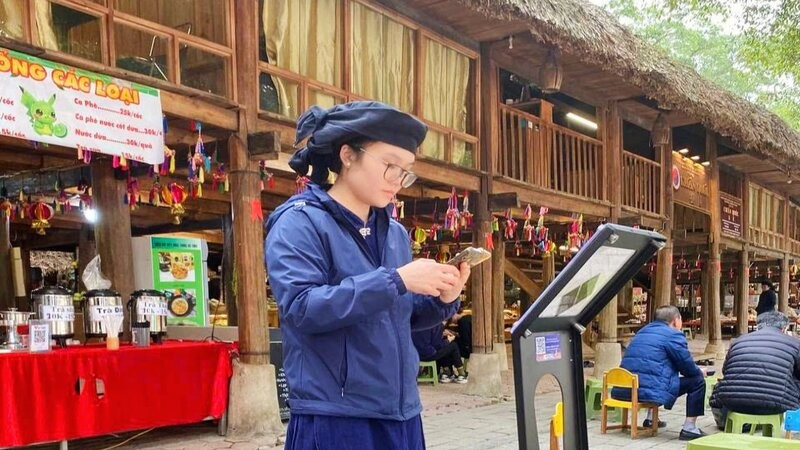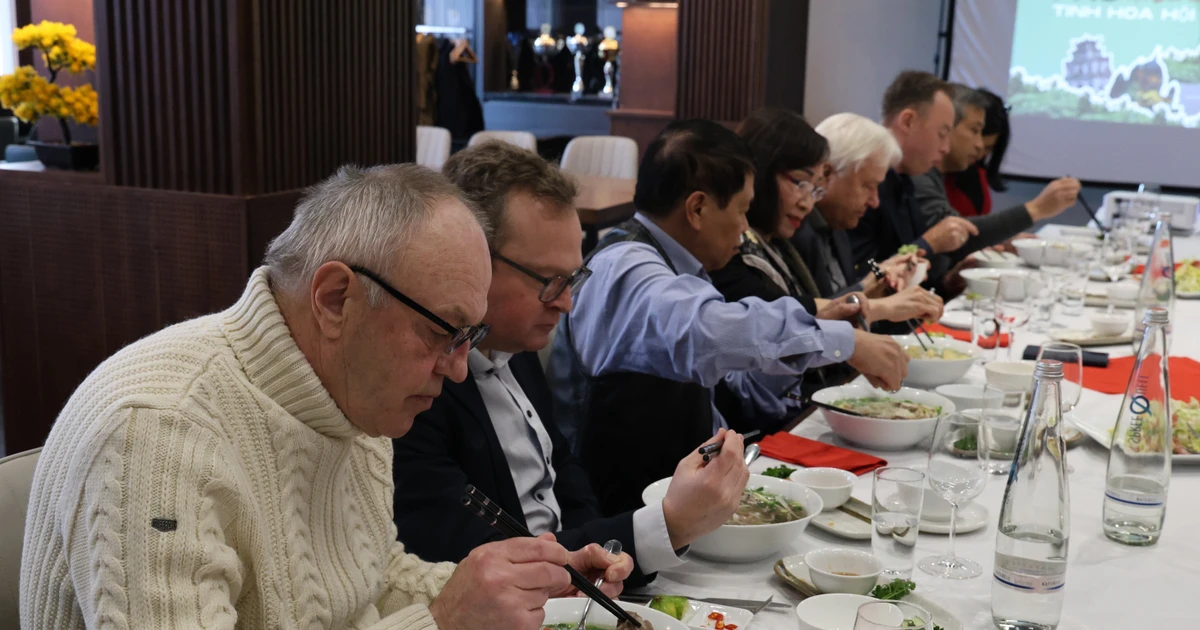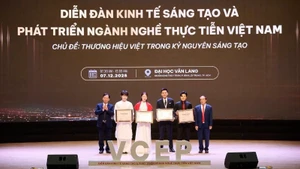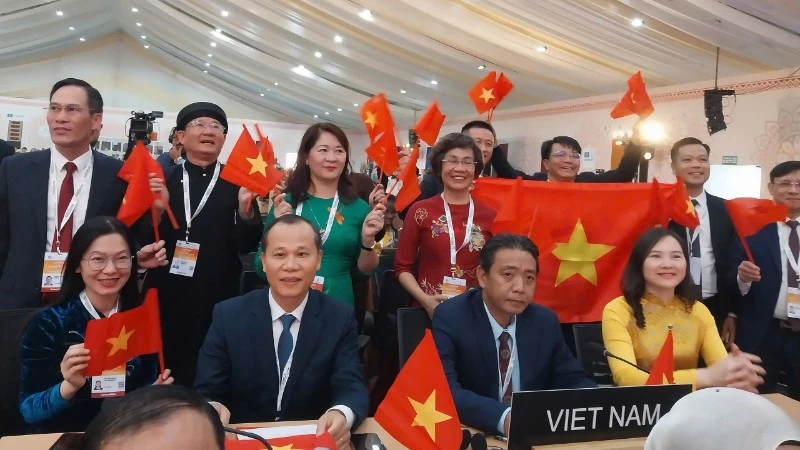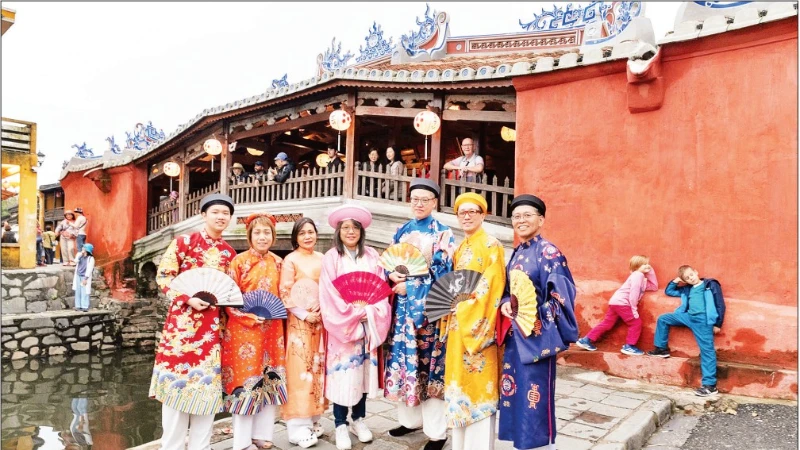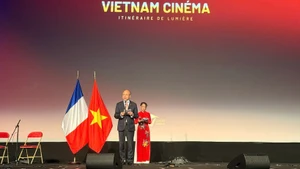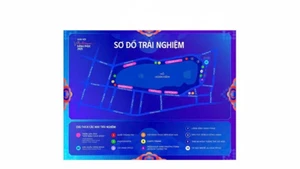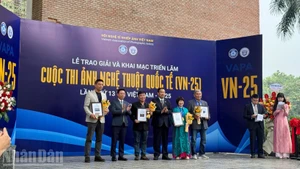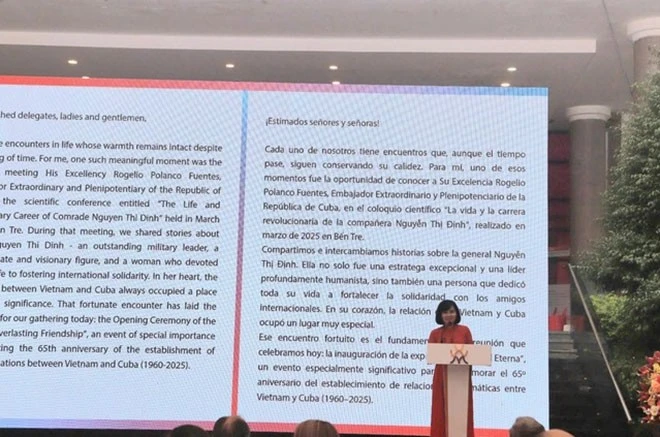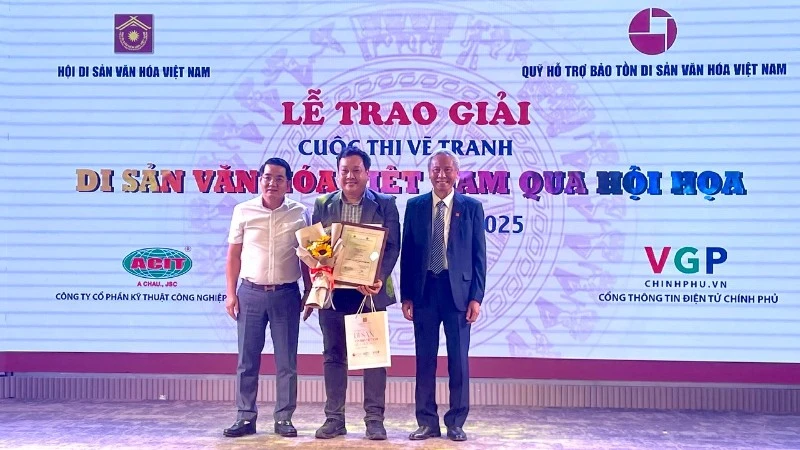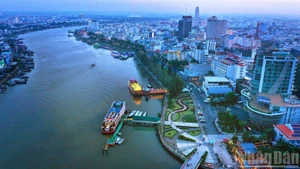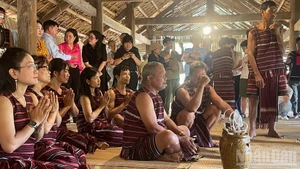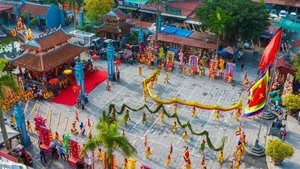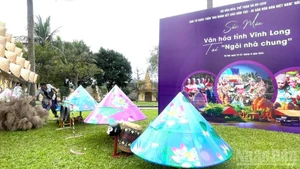The local people had strong patriotism and unwavering support for the revolution, which led the Party and President Ho Chi Minh to choose it as a safe zone (ATK) and the headquarters during the resistance war. Today, this area is recognised as a national historical and cultural relic site.
Recently, as part of the project "Love Vietnam so much" initiated by the Nhan Dan Newspaper, Thai Nguyen Province has actively coordinated with relevant agencies to work with Nhan Dan Newspaper and its partners to install three NFC-enabled boards at the Thai Hai ethnic village conservation area – one of the "Best tourist villages in the world", the Nui Coc Lake tourist site with its legendary love story that deeply touches visitors, and the ATK Dinh Hoa – the “Capital of the Windy Mountains.” These three landmarks are famous for their community-based tourism, wellness retreats, and revolutionary tourism, attracting the most visitors in Thai Nguyen.
From the famous Dinh Hoa rice, the Tam Tra Thai Cooperative produces dry noodles and dry pho, which are popular among consumers.
Located less than 10 km southwest of downtown Thai Nguyen, the Thai Hai ethnic village conservation Area (also known as Thai Hai Village) in My Hao Hamlet, Thinh Duc Commune, Thai Nguyen City, was awarded the “Best tourist village in the world” title by the World Tourism Organization (UNWTO) in 2022. It is a community tourism destination in Thai Nguyen Province.
 |
| The Thai Hai stilt house village attracts many tourists. |
Thai Hai Village lies beneath lush greenery that stays vibrant all year round. There is no sound of motorbikes in the village, and the paths are paved with slanted tiles. The expansive space of over 25 hectares is home to nearly 30 traditional stilt houses characteristic of the Tay ethnic group. The families living in these charming houses are primarily from the Tay ethnic group, with a strong commitment to preserving their pure lifestyle, from their way of living, and language, to their attire both inside and outside the village. The community is organised collectively, practising self-sufficiency, joint production, and shared meals, and there is no private ownership.
With this communal lifestyle, the families in Thai Hai Village have created a unique cultural space that reflects the traditions of the Tay people, which is not affected by the market economy or the hustle and bustle of the outside world. This traditional cultural space has left a deep impression on domestic and international visitors for many years. At times, when there were too many visitors, the village had to apologise and refrain from accepting more guests due to concerns about preserving the cultural space, living environment, and ecological balance.
According to Mrs Nguyen Thi Thanh Hai, the Head of Thai Hai Village, in response to the risk of the traditional stilt houses disappearing, she chose and brought stilt houses from the ATK Dinh Hoa region to Thai Hai Village, inviting their original owners to come and live there. The main objective of the village is to preserve the tangible and intangible cultural values of the Tay ethnic group. Products from the village, such as sticky rice, square cakes, wine, various cakes, and handicrafts, not only serve daily life but also cater to visitors who enjoy immersing themselves in the village’s community and experiencing the "slow living" lifestyle.
 |
| Installation of NFC Tags at Nui Coc Lake Tourism area |
Not far from Thai Hai Village, visitors visit the sloping tea plantations on the rolling hills of the Tan Cuong tea region and Nui Coc Lake, which is associated with the legendary love story of the young man Coc and the beautiful woman Cong. This is an artificial lake, created to block the water of the Cong River, keeping it fresh and unpolluted, serving agricultural production, industrial needs, and the life of the local people. Nui Coc Lake has been designated as a national tourism area and is currently being developed by Thai Nguyen Province to attract more visitors.
With an area of 25 km², Nui Coc Lake is surrounded by forests, and there are tourist accommodations offering a cool, fresh atmosphere during the summer. In the Nui Coc Lake tourism area, there is an artificial stream designed inside a man-made mountain, where visitors can ride boats along the stream through a mysterious maze, listening to the tragic love story of Coc and Cong, feeling emotional and nostalgic for their pure love.
After leaving the artificial stream, visitors can board a cruise boat, relaxing in the vast, blue lake, surrounded by distant mountains and forests. In the evening, visitors can stay at hotels by the lake, enjoying a peaceful, restful time. To further enhance tourism at Nui Coc Lake, the international-standard Tan Thai golf course near the lake is preparing to open, and the Flamingo Majestic Island Resort, a 6-star resort, is under construction by the Flamingo Group.
 |
| With the NFC chip-enabled board installed by Nhan Dan Newspaper, visitors can check in when they arrive at Nui Coc Lake (Thai Nguyen Province). |
After leaving Nui Coc Lake, visitors can go to ATK Dinh Hoa – “the capital of windy mountains” during the resistance war, where President Ho Chi Minh, revolutionary leaders, the Central Party, the Government, and many military and governmental agencies worked during the war against French colonialism.
Visitors can visit the Khau Ty hut, where President Ho Chi Minh lived and worked during his time in ATK Dinh Hoa, or the Tin Keo hut, where President Ho Chi Minh convened the Politburo to decide to launch the Dien Bien Phu campaign on December 6, 1953. These huts have been restored to their original state, constructed with bamboo, leaves, and other natural materials, and preserved and cared for carefully. Visitors can imagine the hardships, simple living conditions, and close connection with nature that President Ho Chi Minh experienced. The simple huts of Party General Secretary Truong Chinh and Prime Minister Pham Van Dong in the mountains are also very simple and close to the people. Through these sites, one can sense the solidarity and support from the local people for the revolution.
Mr Le Quoc Minh, member of the Party Central Committee, Editor-in-Chief of the Nhan Dan Newspaper, Head of the Central Propaganda and Mass Mobilisation Commission, and President of the Vietnam Journalists Association, attended the ceremony.
Today, ATK Dinh Hoa is recognised as a national special historical relic with 13 important sites and hundreds of locations related to the history of the resistance war. It serves as one of the centres for educating the younger generation about revolutionary traditions, attracting thousands of visitors annually who come to pay tribute to Uncle Ho and the revolutionary leaders.
With the installation of NFC tags at Thai Hai Village, Nui Coc Lake, and ATK Dinh Hoa, visitors can use their smartphones to interact with technology, capture images, and learn more about the destinations. This initiative helps promote tourism and enhance the cultural and historical values of Thai Nguyen.
